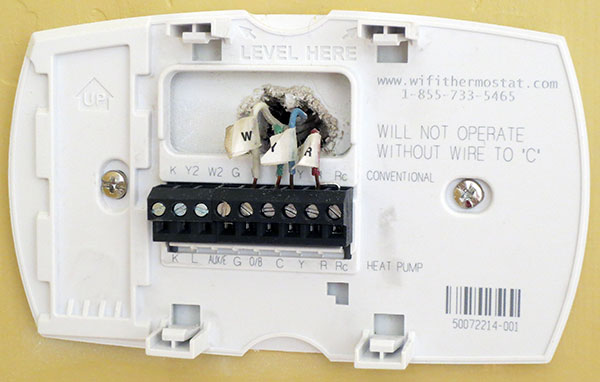How To Install a New Thermostat
Installing a new programmable thermostat is easy to do and can save you money by using less energy. Whether you need to replace an old broken thermostat or want to upgrade to a better one, it is a low-cost and quick project. A programmable thermostat let's you set the temperature to heat and cool your home economically. Instead of turning on the heat or A/C when the thermostat reaches the set temperature, a programmable one also lets you set the temperature by the time of day; seven day models even let you set different schedules for each day of the week. This allows you to set a comfortable temperature for times when you are home, an more economical temperature while you are sleeping and another temperature while you are away from home. This can add up to a big savings in reduced energy use by not heating or cooling a home unnecessarily. If you want more information on selecting a thermostat, read our article for helpful advice.
Replacing a thermostat is pretty easy to do. In most cases it can be accomplished in 15 minutes with just a screwdriver.
Installing a New Programmable Thermostat
Standardized Terminal Labels
|
Turn off the power at the circuit breaker to your furnace. Remove the cover plate to your old thermostat. It is important to note which wires are connected to which terminals. Taking a digital picture is a good idea. Disconnect the wires from the thermostat and secure them so that the wires cannot fall inside the wall. Clip the wires with a clothes pin or large paper clip is effective. Unscrew the thermostat base from the wall and remove it.
Each manufacturer's instructions will vary regarding installation. Our guide provides the general steps for installation but you should always follow the specific instructions provided with your new thermostat.
Run the wires through the base plate of the new thermostat and re-secure the wires with the clothes pin. Secure the base to the wall with one screw. If you don't have a level handy, tighten it enough that it will hold the thermostat in position. Step back a few steps and determine how much to adjust it to make it level. After adjusting, step back again. If it looks good, install the other screws.
Your old thermostat should have labels for each terminal. If it was made in or after 1973, they should match the labels in your new thermostat. Simply install the wires to the matching terminals on the new thermostat.

If there is any question as to the wiring, it may be necessary to note the wire colors and then check which color is connected to what on the furnace, boiler, heat pump or air conditioning. If with that information you still cannot make a determination consult the thermostat manufacturer, Acme's Forum for advice or contact a professional.
Snap the cover onto the base, turn off the heat and cooling operations on the thermostat and restore power to the system at the circuit breaker. Test the heat by turning the thermostat to "Heat" and "On" and listen for the furnace to start and check for warm air. Test the AC similarly. Note that you should not operate the AC when outdoor temperatures are below 65 degrees; limit the test to determining whether the system starts when turned on.
Now, program the thermostat with temperatures and times for operation and you're done.





